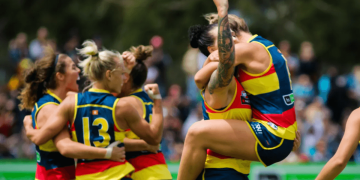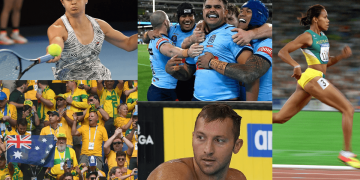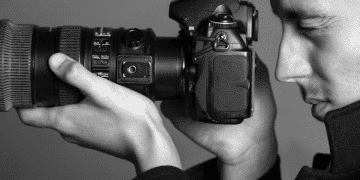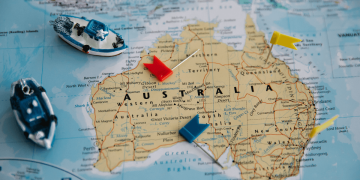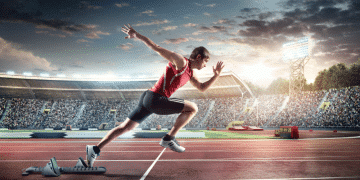Pride & Play: The LGBTQ+ Community in Australian Sports
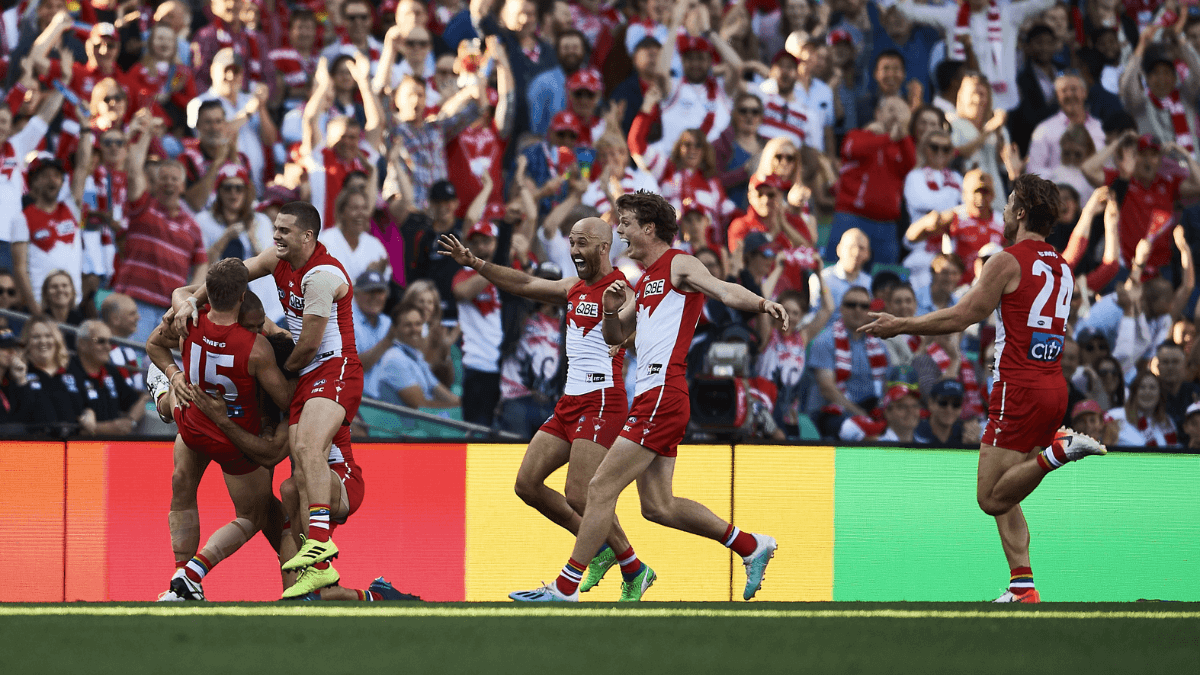
As LGBTQ+ athletes, supporters, and allies keep challenging preconceptions, fighting prejudice, and creating cultures of respect and equality, Australian sport has seen a modest but significant movement toward inclusivity in recent years. From grassroots organizations to professional leagues, the path toward more inclusion and acceptance for LGBTQ+ people within Australian sports is far from finished—but there are significant landmarks, rising heroes, and institutional initiatives advancing the sector.
We investigate in this paper the junction of identity and sport in Australia, stressing policies, trailblazers, obstacles, and community projects changing the scene of LGBTQ+ Australian sports.
A History of Silence: The Legacy of Homophobia in Sport
Australian sports have long been dominated by homogeneous, masculine standards. Whether it’s Aussie Rules, rugby, or cricket, locker rooms and stadiums were sometimes perceived as strongholds of male bravado, where vulnerability or difference was laughed upon or rejected. The decision was sometimes between risking their jobs or hiding who they were for LGBTQ+ athletes.
Very few players felt comfortable enough to come out under during their professional careers until lately. Silence resulted from a fear of losing sponsorships, team cohesiveness, or public respect.
Breaking the Silence: Australian LGBTQ+ Athletes Who Made a Difference
When numerous well-known sportsmen boldly stepped out and told their stories, a new era started. Their candor was really crucial in tearing down barriers in their individual sports.
Ian Roberts – Rugby League Trailblazer
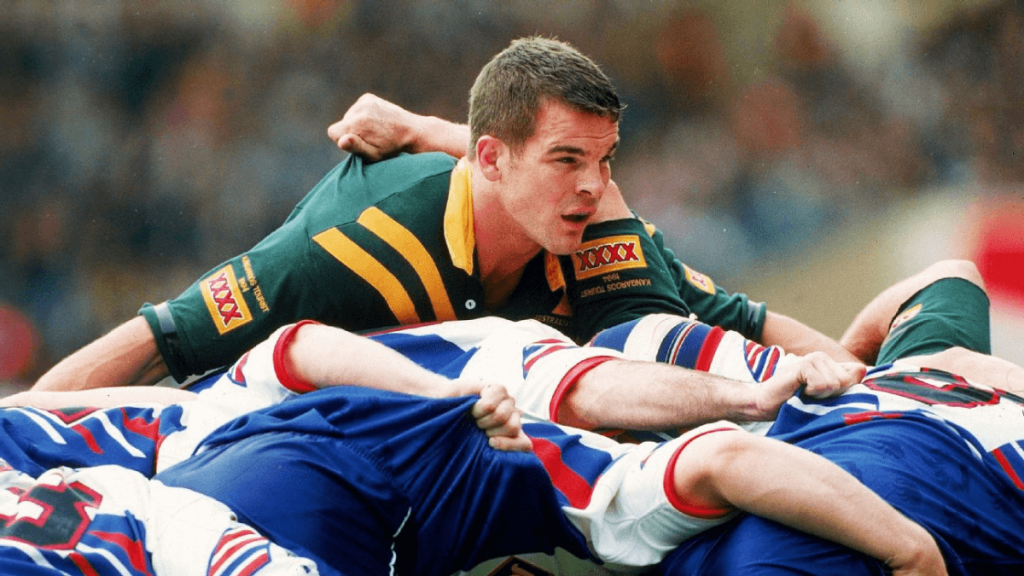
Source: AFL Pride
Ian Roberts, a rugby league player, created history in 1995 by being the first professionally gay player in the world. His choice was revolutionary worldwide as well as for LGBTQ+ Australian sports. Roberts continued to be a vocal supporter of LGBTQ+ equality in sports despite major criticism and even threats. Even now, sportsmen are motivated by his legacy.
Michelle Heyman – Leading the Charge in Women’s Football

Source: Darrian Traynor / Getty Images
Visible and vocal member of the LGBTQ+ community is Matildas striker and A-League Women standout Michelle Heyman. Since the start of her career, Heyman, who is out gay, has regularly supported diversity and acted as a role model for young players investigating both their sexual orientation and love of the game.
Casey Dellacqua – Tennis Champion and Mother
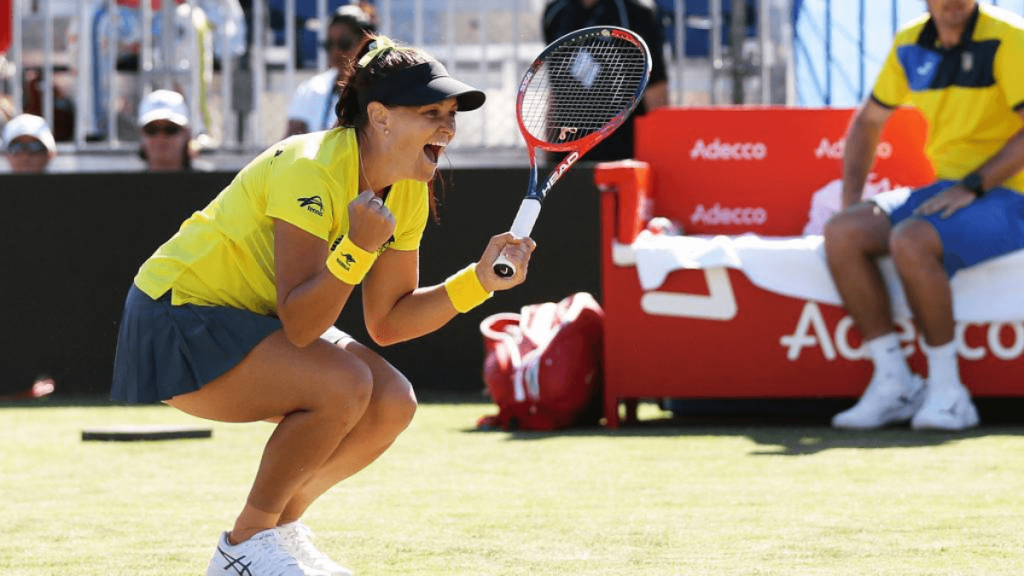
Source: Matt King/Getty Images
Former Olympian and tennis player Casey Dellacqua has been upfront about her same-sex partnership and path as a parent. Her advocacy goes beyond tennis since she regularly addresses family inclusiveness, LGBTQ+ parenting, and the need of more general acceptance in all Australian sports.
The Rise of LGBTQ+ Visibility in Team Sports
While individual sports such as tennis, swimming, and athletics have seen LGBTQ+ athletes come out more freely, team sports—particularly men’s leagues—have been slower to embrace diversity.
However, recent years have seen a cultural shift. National Rugby League (NRL), Australian Football League (AFL), and Cricket Australia have started implementing diversity policies and proudly participating in LGBTQ+ awareness events like Pride Rounds and Mardi Gras celebrations.
AFL Pride Game: A Cultural Landmark
The AFL’s annual Pride Game, initiated between St Kilda and the Sydney Swans, has become a symbol of acceptance. The game features rainbow guernseys, pre-game messaging, and educational outreach about LGBTQ+ issues. It marks a clear commitment to celebrating Australian sports diversity while offering visibility and validation to LGBTQ+ fans and players alike.
NRL’s Inclusion Framework
The NRL’s “Inclusion Framework” focuses on eliminating discrimination and promoting respect, with a firm stance against homophobia in the game. Despite this, controversies still arise—like when several Manly Sea Eagles players refused to wear a pride jersey in 2022, sparking a national conversation on inclusivity, religion, and freedom of expression.
This incident revealed that while institutional support is growing, cultural acceptance within locker rooms and fan communities still varies widely.
Community-Level Support: Where Real Change Begins
True progress often starts from the grassroots. Across Australia, countless local sporting clubs and organisations are actively championing LGBTQ+ inclusion, offering safer spaces for participation, self-expression, and connection.
Pride Cup: From Local Footy to National Movement
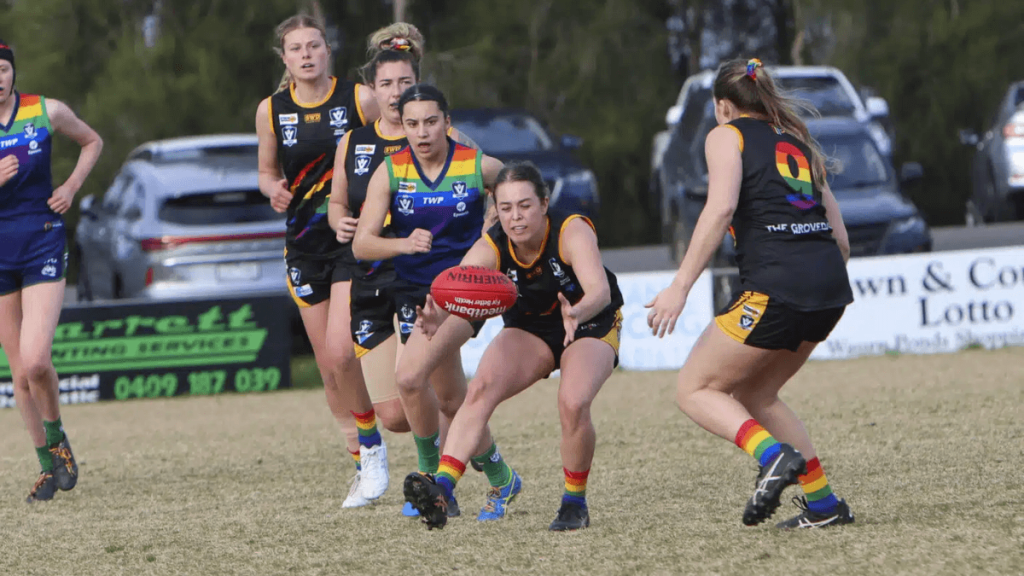
Source: Pride Cup
Founded after a successful 2014 pride match between Yarra Glen and Yarra Junction in Victoria’s Yarra Valley, Pride Cup has grown into a national initiative that supports local clubs to hold pride-themed matches. The event includes rainbow-painted fields, educational programs, and visible support from players and fans.
Pride Cup isn’t just a one-day event—it’s a catalyst for long-term cultural change in community sport, helping clubs implement ongoing diversity education and anti-discrimination policies.
Proud2Play: Empowering LGBTQ+ Participation
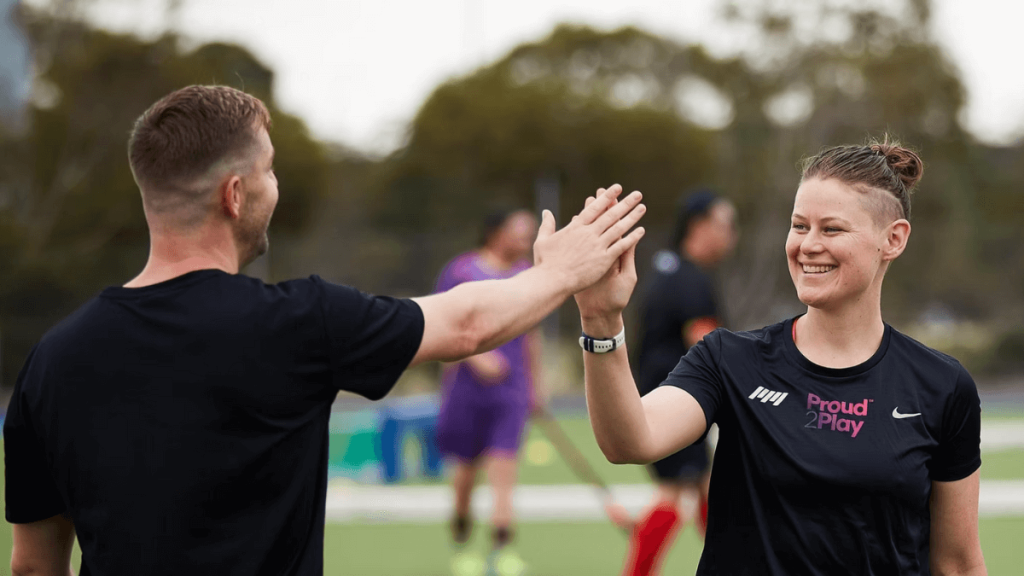
Source: Proud2Play
Proud2Play is another vital Australian organisation working to increase LGBTQ+ engagement in sport, exercise, and recreation. Through research, training, and community outreach, they collaborate with sports organisations to make clubs safer and more inclusive.
By focusing on inclusion at every level—from youth teams to coaching boards—they ensure that sport remains accessible for everyone, regardless of sexuality or gender identity.
The Transgender and Non-Binary Experience in Australian Sports
While gay and lesbian athletes have slowly gained visibility, transgender and non-binary athletes still face immense barriers.
Policies regarding trans inclusion vary significantly between sports and levels of play. While some organisations, like Cricket Australia, have adopted inclusive policies that allow trans and gender-diverse players to compete in alignment with their identity, others lag behind.
The issue often becomes a lightning rod in public discourse, especially when elite-level competition is involved. Still, organisations like Equality Australia and ACON are leading policy advocacy and education, stressing that the focus must remain on inclusion, mental health, and fair access—not sensationalism.
Challenges That Persist
Despite significant progress, the LGBTQ+ community still faces multiple challenges in the Australian sports landscape.
Homophobic and Transphobic Language
Casual homophobia and transphobia—whether from fans in the stands or players on the field—remain a serious concern. A 2020 study by Monash University found that 80% of LGBTQ+ participants had witnessed or experienced discriminatory language in sport.
Such language not only discourages participation but also harms mental wellbeing, leading many LGBTQ+ youth to drop out of sport altogether.
Lack of Representation at the Elite Level
While some athletes are out and proud, a lack of openly LGBTQ+ representation in men’s elite sports remains notable. Fear of backlash, negative media attention, or career damage often deters athletes from coming out during their peak years. Increasing visibility is critical to showing young LGBTQ+ Australians that there’s a place for them in every league and on every team.
Mental Health Impacts
The mental health of LGBTQ+ athletes is another pressing concern. The pressure to conform, fear of exclusion, and experience of discrimination contribute to higher rates of anxiety, depression, and suicide ideation. Mental health support services must be integrated into sports environments, particularly for gender-diverse and queer-identifying youth.
Steps Toward Greater Inclusion
To promote genuine Australian sports diversity, more proactive, systemic changes are needed. These include:
- Comprehensive education programs for athletes, coaches, and administrators on LGBTQ+ issues.
- Inclusive policies and language within club charters, codes of conduct, and league bylaws.
- Visible campaigns and partnerships that signal support, such as rainbow gear, public statements, and social media visibility.
- Consultation with LGBTQ+ organisations when forming policies or responding to discrimination.
The Role of Media in Shaping Perception
Public perceptions of LGBTQ+ inclusion in sports are much shaped by the media. Positive coverage of LGBTQ+ sportsmen and advocates helps to normalize diversity and challenges negative preconceptions. Conversely, sensationalist or intrusive reporting can discourage sportsmen from coming out.
Australian sports media outlets are gradually growing more aware of their obligations in this area. More complex, compassionate narratives of LGBTQ+ Australian sports stories are provided by initiatives including ABC’s Pride coverage and SBS’s “The Feed”.
Looking Ahead: Hope on the Horizon
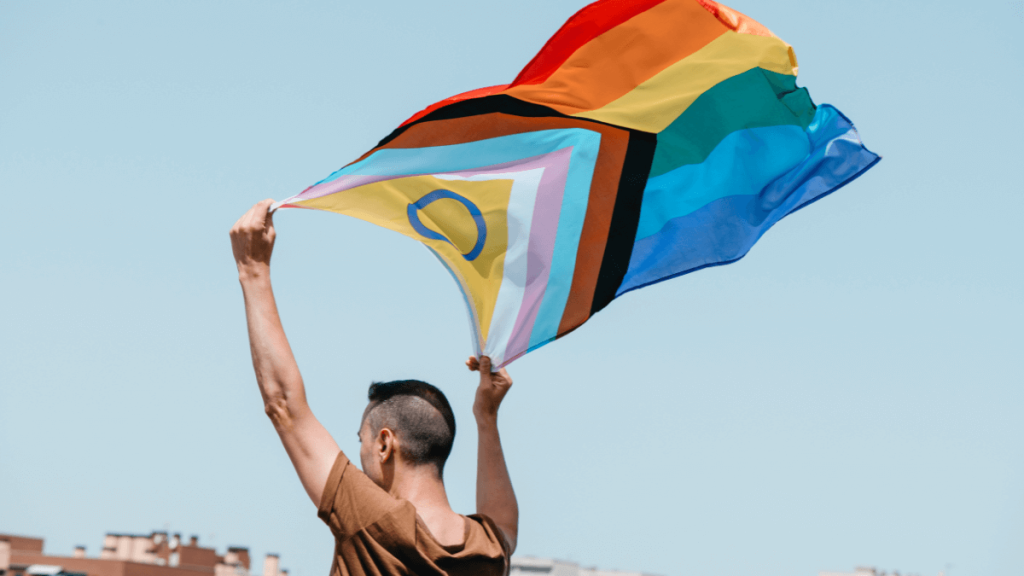
Although the path toward total inclusion is long, sportsmen, activists, supporters, and organizations who think sport should be accessible to all are laying it. The message gets clearer as more LGBTQ+ people go forward and more clubs embrace inclusive policies: diversity benefits sports.
Australian sports diversity’s future resides in accepting all identities as natural members of every team, not as tokens or stats. LGBTQ+ Australians are not only playing; they are leading, motivating, and changing the game whether on the footy field, cricket pitch, Olympic track.

